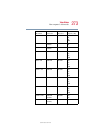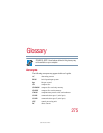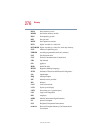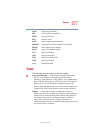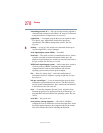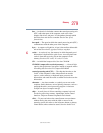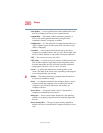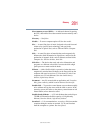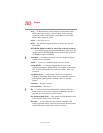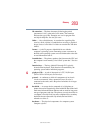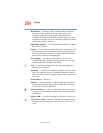
278
Glossary
5.375 x 8.375 ver 2.4.0
alternating current (AC) — The type of power usually supplied to
residential and commercial wall outlets. AC reverses its direction
at regular intervals. Compare direct current (DC).
application — A computer program that you use to perform tasks
of a specific type. Applications include word processors,
spreadsheets, and database management systems. See also
program.
B
backup — A copy of a file, usually on a removable disk, kept in
case the original file is lost or damaged.
basic input/output system (BIOS) — See BIOS.
baud rate — The speed at which a communication device, such as
a printer or modem, transmits information. Baud rate is the
number of signal changes per second (not necessarily the same as
bits per second). See also bits per second.
BIOS (basic input/output system) — Basic instructions, stored in
read-only memory (ROM), containing the information the
computer needs in order to check hardware and load the
operating system when you start up the computer.
bit: — Short for “binary digit.” A bit is the smallest unit of
information used by a computer. A group of eight bits is a byte.
See also byte.
bits per second (bps) — A way of measuring the speed at which
information is passed between two devices. The basic measure
used in modem communications, bps is similar, but not identical,
to the baud rate. See also baud rate.
boot — To start the computer. The term “boot” originates from
bootstrap program (as in “pulling itself up by its bootstraps”), a
program that loads and initializes the operating system. See also
reboot.
boot disk — See system disk.
boot priority (startup sequence) — The order in which the
computer accesses its disk drives to locate the startup files. Under
the default startup sequence, the computer looks for the startup
files in the diskette drive before checking the hard disk.






